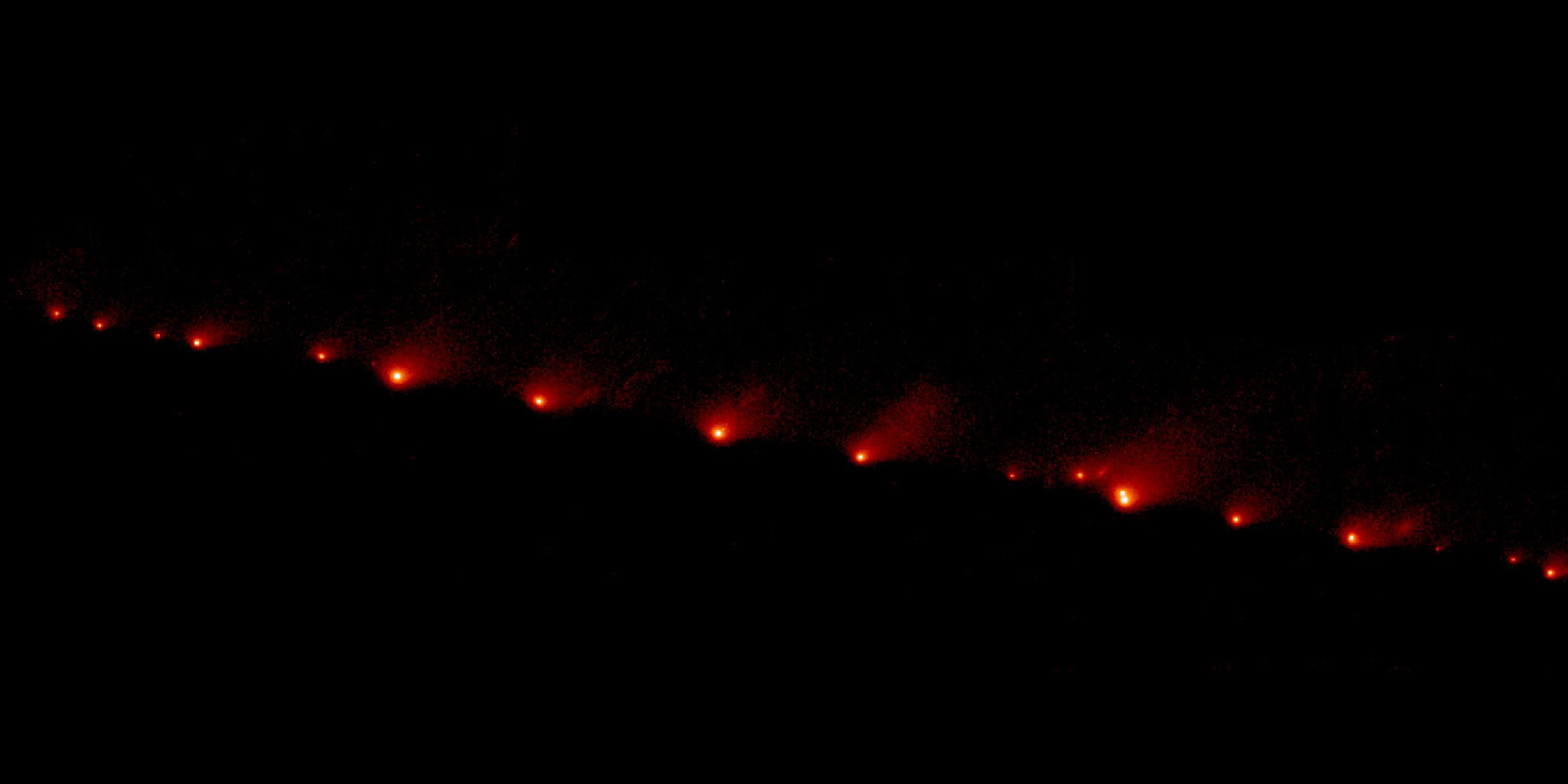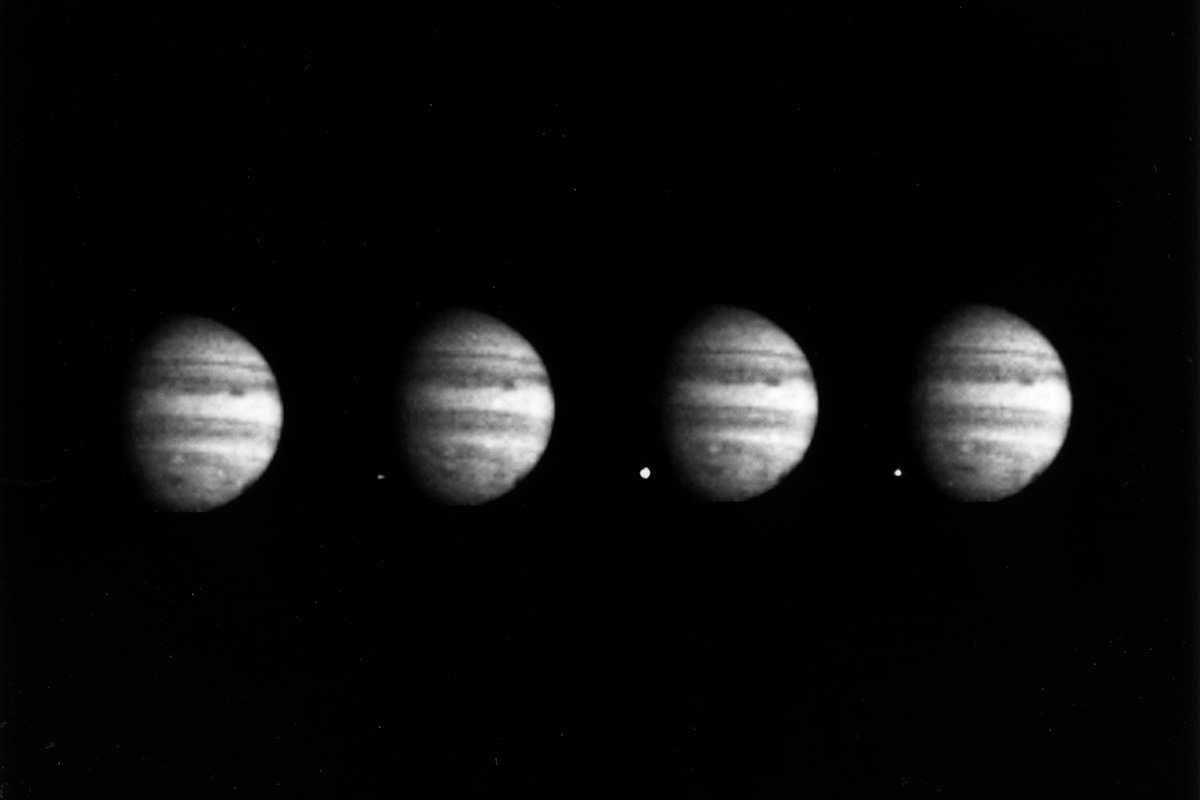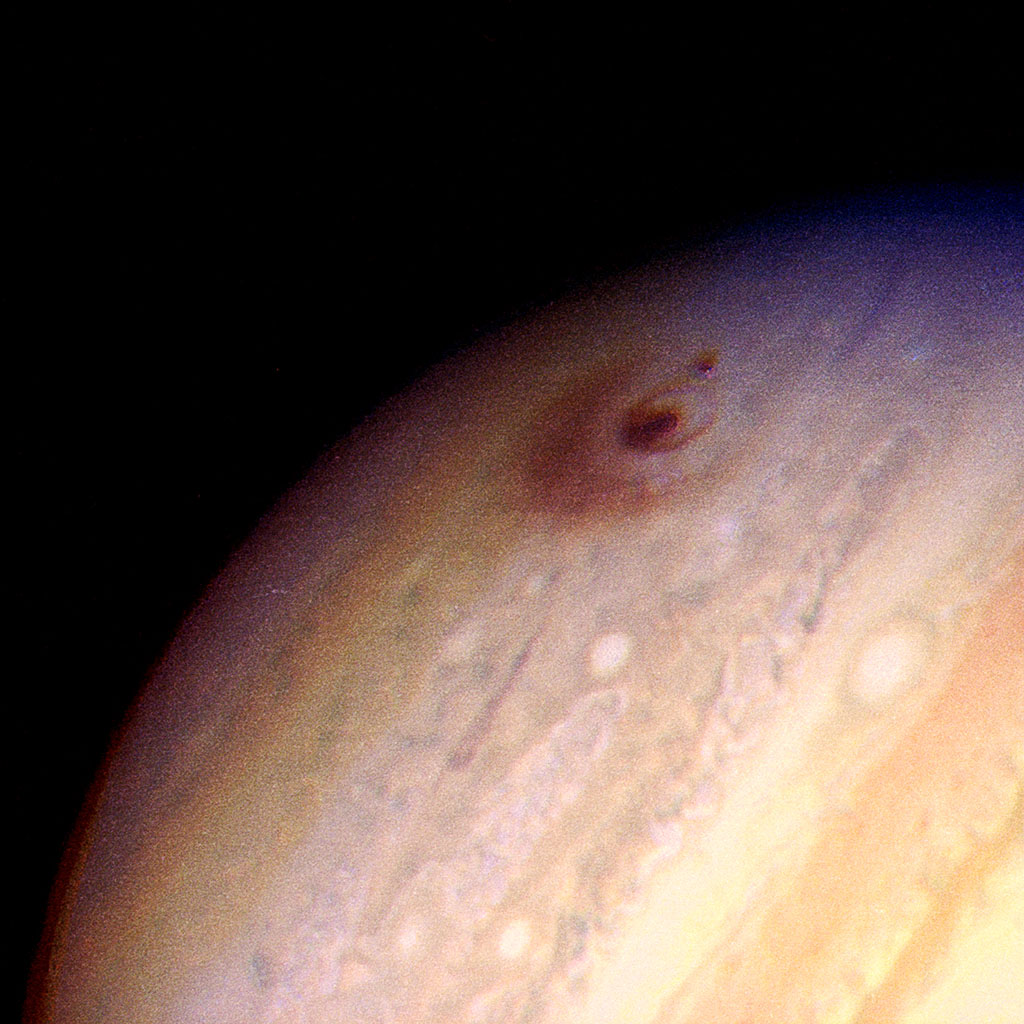Comet Shoemaker-Levy 9
Over 66 million years ago, dinosaurs ruled the world. These giant reptiles dominated the planet, living on the land, in the air and in the sea. Their reign came to a sudden and dramatic end when a catastrophic event led to their mass extinction. It is thought that the cause was a large asteroid or comet smashing into Earth. The collision caused global fires and blasted huge quantities of dust and gas into the atmosphere, blocking sunlight and making Earth uninhabitable for up to 75% of its species. The chances of such an event happening again are very small but not impossible. Fortunately the huge planet Jupiter is on hand to vacuum up many objects which could be dangerous if they were to hit Earth. In fact, one such event happened as recently as 1994 when a comet collided with Jupiter. That comet was Shoemaker-Levy 9 which got a little too close to the giant planet, broke into pieces and fell into its atmosphere in spectacular fashion.
Shoemaker-Levy 9 was discovered on 24th March 1993 by husband and wife Eugene and Carolyn Shoemaker and their friend David Levy. Between them, they had already discovered eight comets. Shoemaker-Levy 9 was their ninth. Unusually, Shoemaker-Levy 9 was found in an orbit of Jupiter. Up to that point, all comets were thought to orbit the Sun. Quite possibly, Shoemaker-Levy 9 was originally a Sun-orbiting comet but Jupiter's gravity captured it in the 1960s or 1970s. It is thought that this is how large planets like Jupiter gain some of their moons, by grabbing passing objects and taking them into its orbit.

At the time of its discovery, Comet Shoemaker-Levy 9 had already been torn apart by Jupiter's gravity and was in several fragments. It is thought that this happened in July 1992. Objects have been known to have been pulled apart by the gravity of large planets, and again this is a way that some of their smaller moons or even rings form. What got scientists excited about Shoemaker-Levy Comet was that it looked like it would actually collide with Jupiter rather than stay in its orbit.
In July 1994, astronomers, scientists and space enthusiasts all over the world pointed their telescopes, satellites and big binoculars towards Jupiter in anticipation of Comet Shoemaker-Levy 9's impending collision. On 16th July 1994, the first fragment crashed into Jupiter at a speed of 60 kilometres/37 miles a second. This collision caused a fireball which reached a temperature of almost 24,000 °C as measured by the Galileo space probe which was en route to Jupiter. The impact itself left a huge dark spot on Jupiter, about half the diameter of Earth. The largest dark spot was caused by an impact on 18th July 1994 which measured about 12,000 kilometres, about the same size as Earth. The amount of energy released from the impacts was 600 times more powerful than if all of the nuclear weapons on Earth were used at the same time! The final fragment of the Shoemaker-Levy comet impacted with Jupiter on 22nd July 1994. In total there were 21 impacts, named as Fragment A to Fragment W.


The dark spots could be seen on Jupiter for several months after the impacts and were said to be easier to spot than its Great Red Spot. They have since faded away and Comet Shoemaker-Levy is now just a part of Jupiter's atmosphere, and an example of how the solar system continues to evolve. If such an impact happened on Earth, it would have been disastrous.
Since the collisions, other comets have been discovered to be orbiting Jupiter. Its role as a comet capturer shows that these kind of events are more common than previously thought and that Jupiter plays a key role in protecting Earth from cataclysmic comets and atrocious asteroids.





